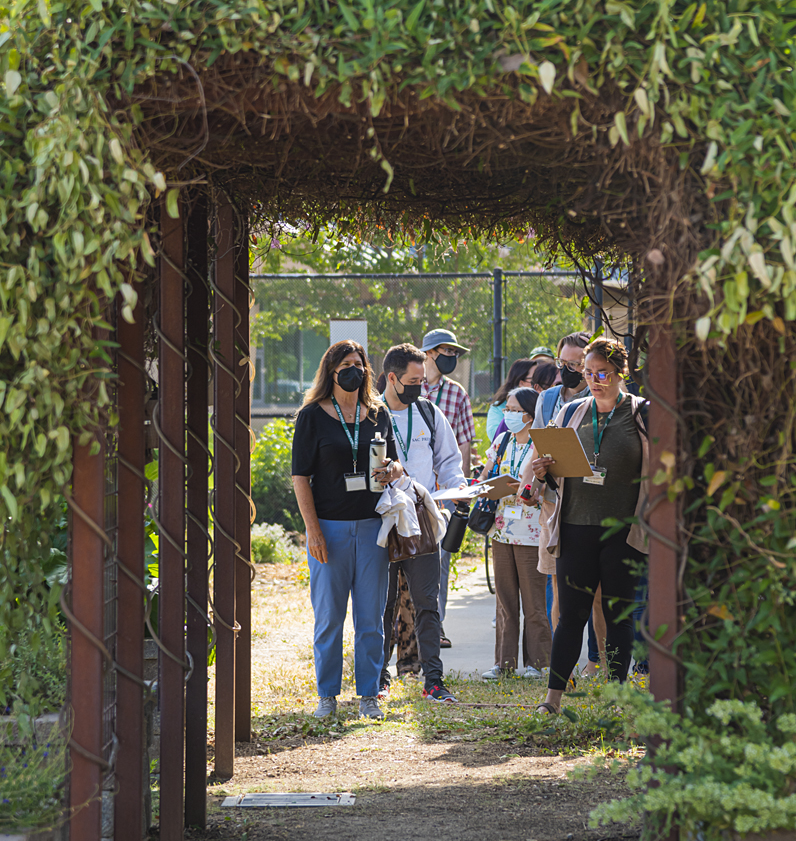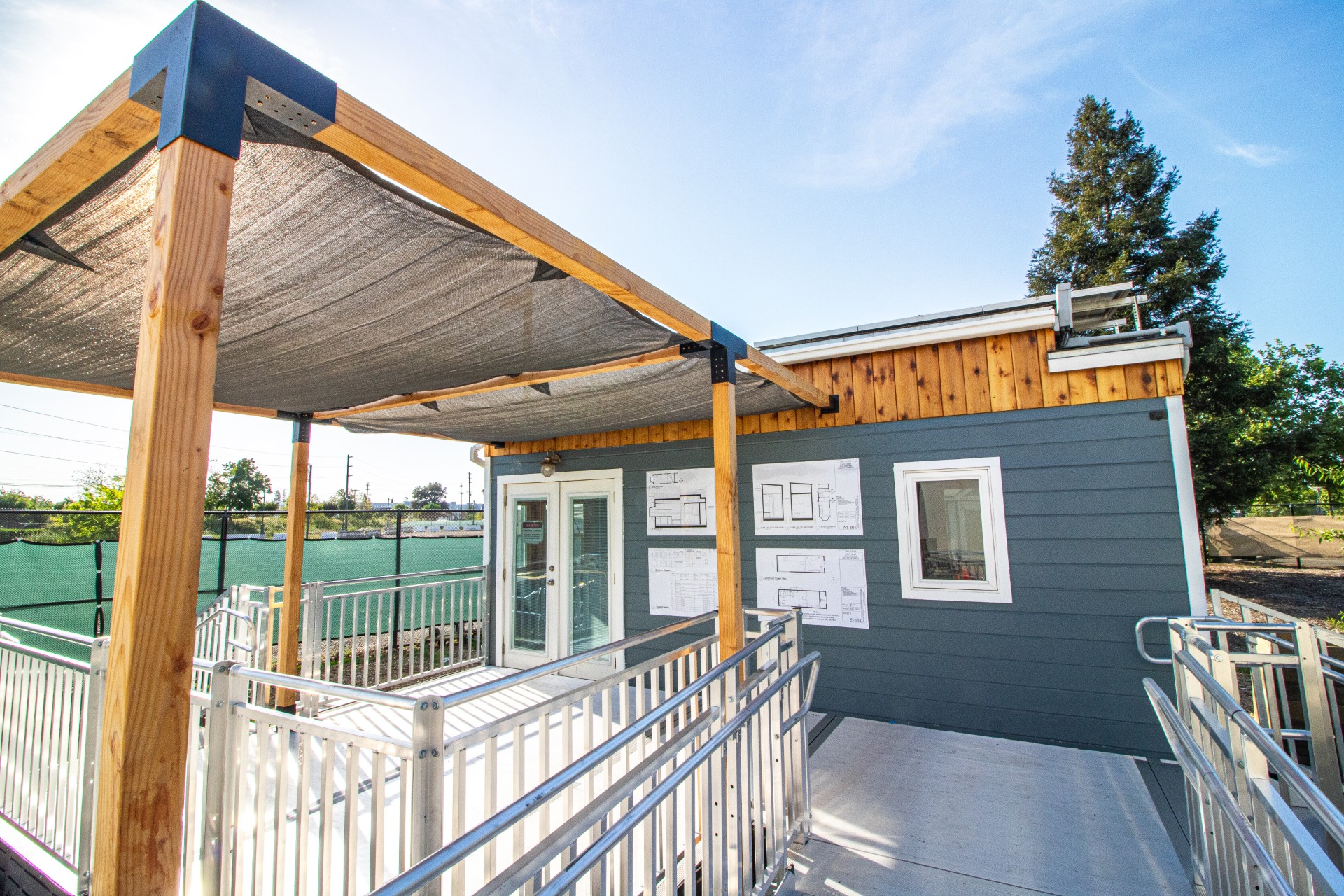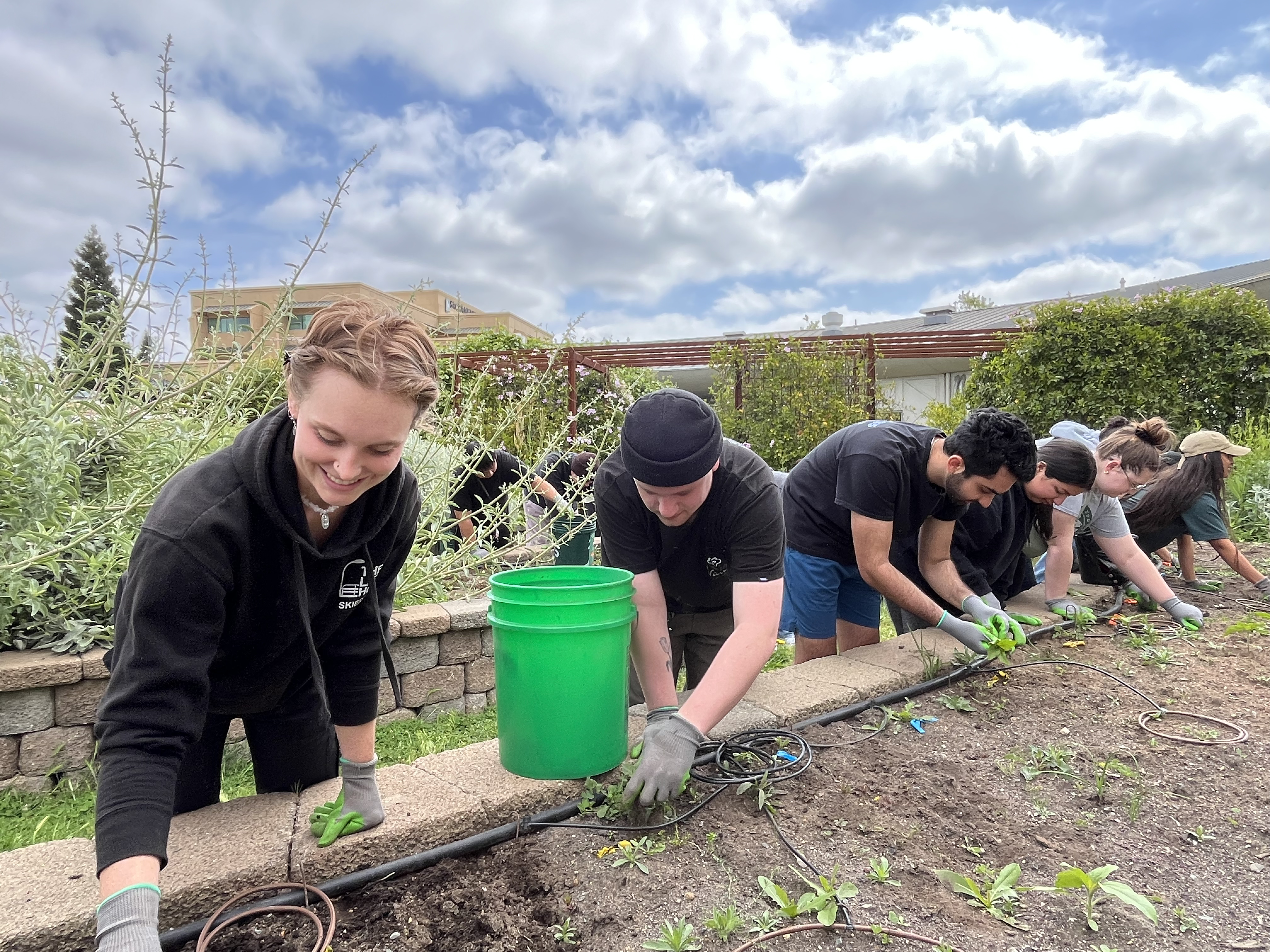Support Page Content
The Garden
History & Purpose
The CapRadio Garden was originally built by Capital Public Radio as a gathering space for community members, policy makers, educators, and students, to discuss sustainability and the critical challenges facing the global food system. It has provided a place for hands-on activities, lectures and dialogue on the multi-dimensional issues around food. In 2020, the Office of Sustainability acquired the garden from Capital Public Radio with the goal of continuing their work and expanding the garden to a broader student and faculty audience. The change also allowed 100% of the produce grown in the garden to be sent directly to the campus ASI Food Pantry. Each year thousands of pounds of fresh fruits and vegetables are planted, harvested and delivered by students to the ASI Food Pantry. The garden has also seen the addition of honeybees, an aquaponics system, a tiny house, and a small flock of chickens. The space is regularly used by students and faculty as an outdoor teaching space and living laboratory for sustainability research.


Aquaponics
Capital Public Radio Garden houses a small aquaponics unit to provestrate modular urban agricultural systems. Aquaponics is the marriage of aquaculture and hydroponics into a closed-loop biological system. Three biological components thus make up the loop; fish, bacteria, and plants. Bacteria utilizes ammonia produced by the fish and rearrange the nitrogen molecules into usable fertilizer for plants. This urban growing practice uses 90% less water than conventional farming methods and has increased production rates due to the lack of competition for nutrients associated with soil-based agriculture. It also dramatically reduces the number of weeds that grow in the system.
Anchor University
Sac State Sustainability strengthens our commitment as an anchor university by providing free compost to disadvantaged communities and local farms throughout the Sacramento region. Our donations help urban gardens produce healthy food and create resilient communities. Additionally, sustainability staff provide education and outreach through campus tours and in-class demonstrations at local schools.


Tiny House
The tiny house originally built by Construction Management and Mechanical Engineering students for a SMUD Tiny House competition has found a new home at the Cap Radio Garden. The building recently received an electric induction stove and ADA accessible deck and ramp. As a permanent feature at the CapRadio Garden, it is used during tours to educate K-12, college students, and the local community about the benefits of living sustainably.
Living Lab
The campus garden is an example of a space that serves as a resource to grow local produce for the ASI Food Pantry, but also as a less traditional classroom space. With abundant signage staged intentionally throughout, students, faculty, and visitors can browse different functions of the garden such as serving as a home for native pollinators, the benefits of composting, and even renewable energy. Furthermore, the site offers space for research with various disciplines and is home to student projects such as a tiny home, which was entirely designed and built by students at Sac State.
